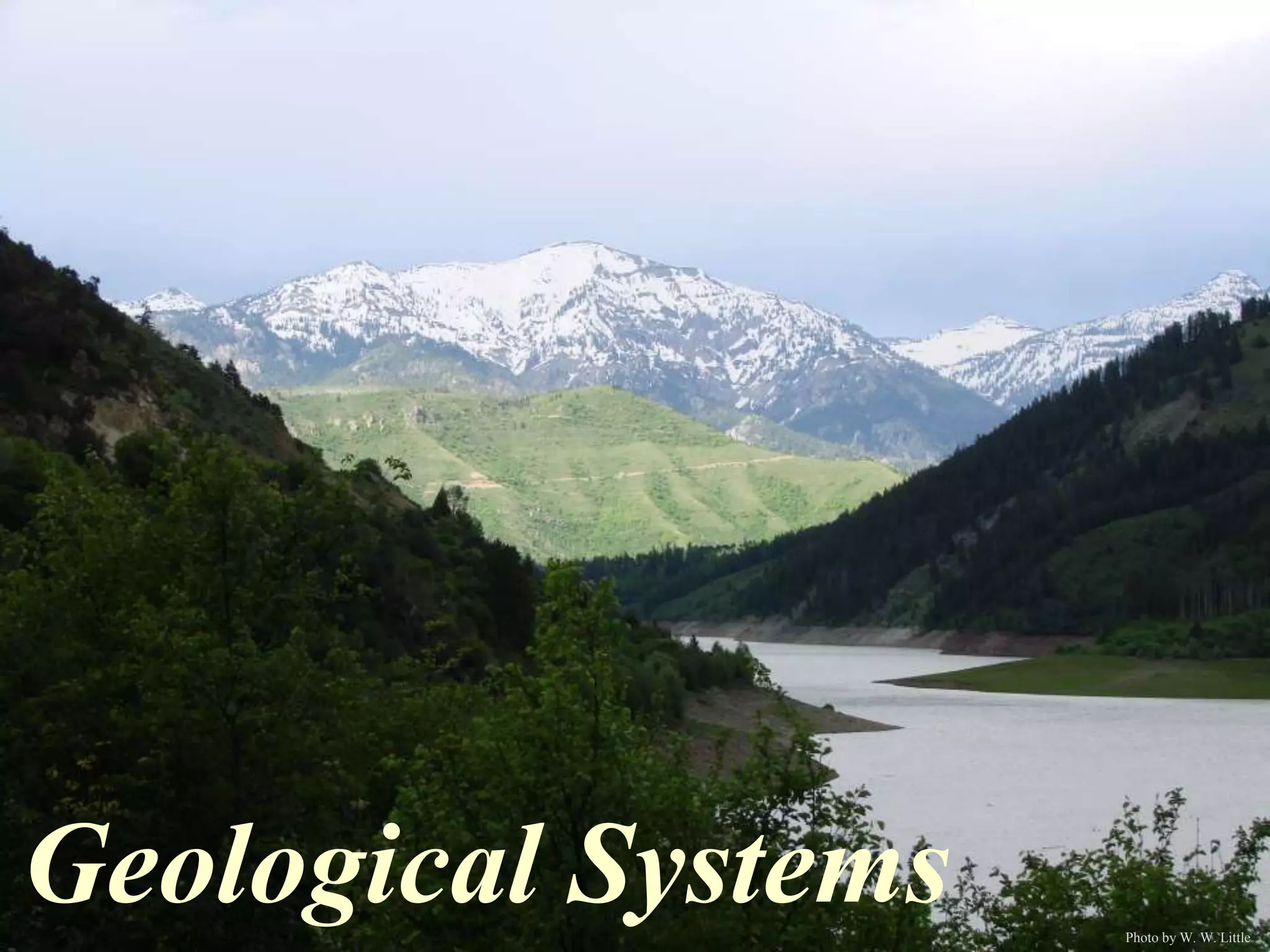The document summarizes key concepts in geology including the tectonic and hydrologic systems that shape the Earth's surface. It describes plate tectonics and mantle convection that drive the tectonic system, and the water and atmospheric processes that drive the hydrologic system through weathering and erosion. It also compares the geological features and evolution of the terrestrial planets and moons based on differences in size, composition and distance from the Sun.




















































